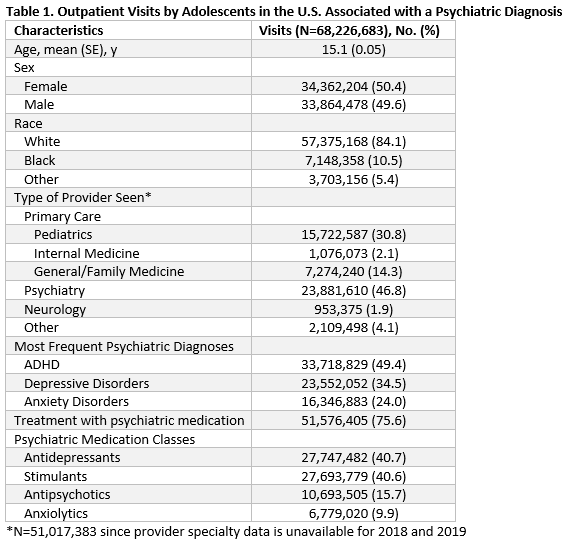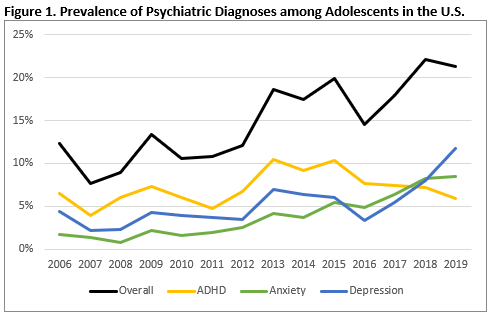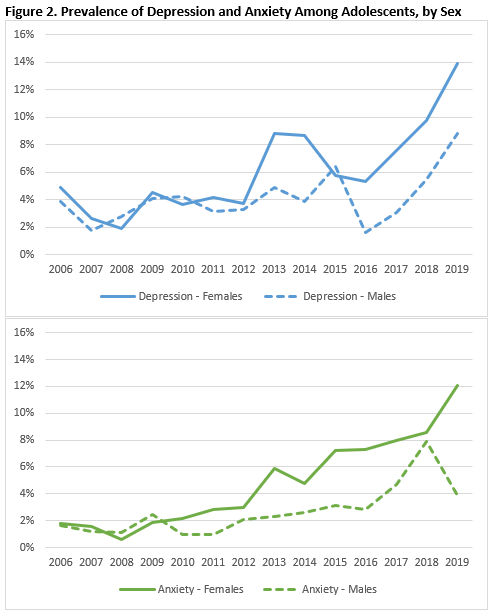Mental Health
Mental Health 2
401 - Trends in Psychiatric Diagnoses among US Adolescents, 2006 to 2019.
Publication Number: 401.231
- RA
Rosa Ahn-Horst, MD, MPH
Resident
Harvard Medical School
Boston, Massachusetts, United States
Presenting Author(s)
Background:
The COVID-19 pandemic has highlighted a growing mental health crisis among adolescents with alarming increases in emergency department visits and suicide attempts in this age group. In response, the American Academy of Pediatrics declared a national emergency in children’s mental health and called for improved strategies to effectively address mental health needs. It is unclear, however, the extent to which the current mental health crisis represents an exacerbation of underlying trends in the past decade.
Objective:
To assess national trends in psychiatric diagnoses among adolescents during physician office visits prior to the COVID-19 pandemic.
Design/Methods: We conducted a retrospective study using data from the US National Ambulatory Medical Care Survey (NAMCS) from 2006 through 2019. The analysis included outpatient visits by adolescents (13-17 years) with a psychiatric diagnosis. We used descriptive analyses to characterize visits and performed X2 tests for linear trends to examine the prevalence of psychiatric illness over time, stratified by sex. All statistical analyses were performed in Stata 11 and Excel.
Results:
There were 483,097,767 adolescent visits to office-based physicians, of which 68,226,683 (14%) were associated with a psychiatric diagnosis. The mean (SE) age of patients was 15.1 (0.05) years with similar numbers of females and males (Table 1). Visits were most frequently to primary care providers (47.2%) and psychiatrists (46.8%). ADHD was the most common diagnosis (49.4%), followed by depressive disorders (34.5%), and anxiety disorders (24.0%). Three-quarters of adolescents were treated with at least one psychiatric medication, most commonly antidepressants (40.7%) and stimulants (40.6%). The proportion of visits reporting at least one psychiatric diagnosis steadily increased from 12.3% in 2006 to 21.3% in 2019 (p< 0.001) (Figure 1). Notably, from 2016 to 2019, there were increases in depressive (p=0.01) and anxiety disorders (p=0.08) while ADHD diagnoses were unchanged (p=0.55). There were sex differences in psychiatric illnesses, with depressive and anxiety disorders more frequently diagnosed among females compared to males (5.6% vs 3.8% and 3.9% vs 2.3%, respectively; p< 0.01 for both) (Figure 2).
Conclusion(s):
The prevalence of adolescents with psychiatric illnesses has steadily increased, nearly doubling from 2006 to 2019. There was a greater burden of depressive and anxiety disorders among females, which should be considered in prevention and treatment programs designed to address the current adolescent mental health crisis.


